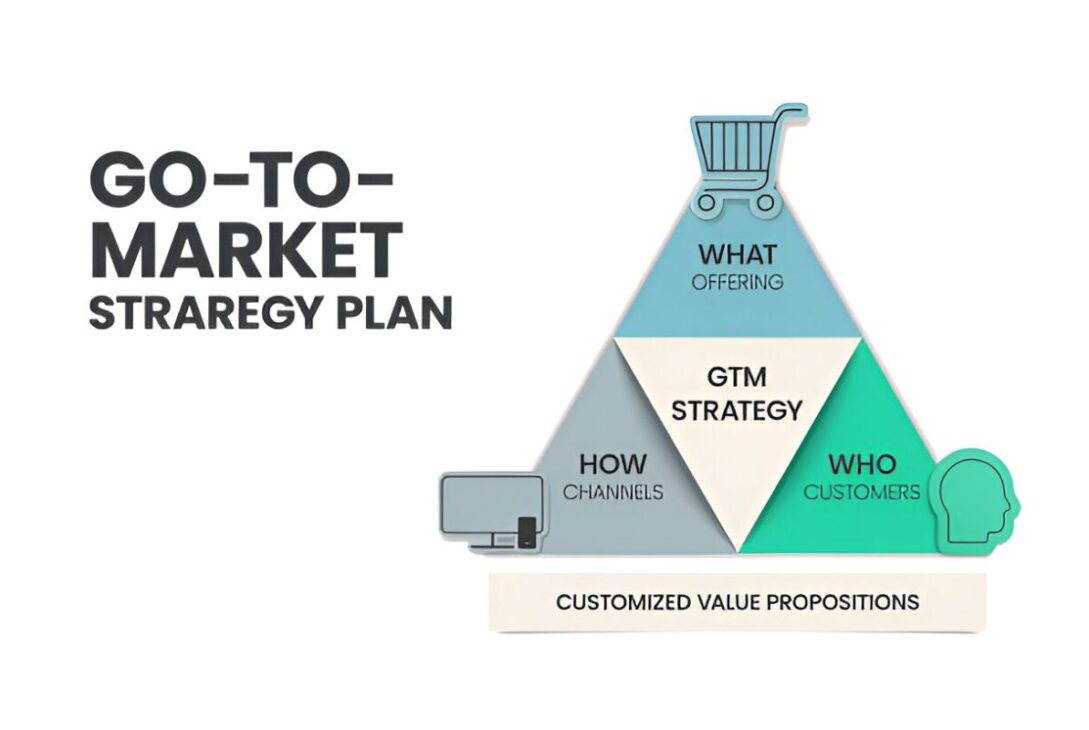A well-crafted Go-to-Market (GTM) strategy is crucial for any business aiming to introduce a new product or service to the market successfully. It outlines how a company will engage with customers, compete in the market, and ultimately achieve success. This comprehensive guide will walk you through the essential steps to develop an effective GTM strategy that drives product marketing success.
Understanding the Go-to-Market Strategy
Before diving into the specifics, let’s define what a GTM strategy is. A GTM strategy is a detailed plan used by companies to launch a new product or service. It involves everything from market research and competitive analysis to marketing tactics and sales strategies. The primary goal is to ensure that the product reaches its target audience effectively and achieves the desired business outcomes.
Essential Steps in Developing a GTM Strategy
1. Define Your Target Market
Understanding your target market is the foundation of any successful GTM strategy. This involves identifying who your ideal customers are and what their needs and pain points are.
- Market Segmentation: Break down the market into distinct segments based on demographics, psychographics, geography, and behavior.
- Buyer Personas: Develop detailed profiles of your ideal customers, including their goals, challenges, and buying behavior.
2. Conduct Market Research
Market research provides valuable insights into industry trends, customer preferences, and competitive dynamics.
- Competitive Analysis: Identify your key competitors and analyze their strengths, weaknesses, market positioning, and customer feedback.
- Customer Feedback: Gather input from potential customers through surveys, interviews, and focus groups to validate your product concept and refine your value proposition.
3. Define Your Value Proposition
Your value proposition is the core of your GTM strategy. It defines what makes your product unique and why customers should choose it over competitors.
- Unique Selling Points (USPs): Highlight the features or benefits that differentiate your product from others in the market.
- Benefits vs. Features: Focus on how your product solves customer problems and adds value rather than just listing its features.
4. Develop a Pricing Strategy
Pricing is a critical component of your GTM strategy. It affects how customers perceive the value of your product and can influence sales performance.
- Pricing Models: Choose a pricing model that aligns with your business goals and target market. Common models include cost-plus, value-based, and competitive pricing.
- Pricing Tiers: Consider offering different pricing tiers or packages to cater to various customer segments.
5. Create a Marketing Plan
Your marketing plan outlines how you will promote your product and generate demand.
- Marketing Channels: Select the channels that will be most effective in reaching your target audience, such as social media, email marketing, content marketing, and paid advertising.
- Content Strategy: Develop a content plan that includes blog posts, whitepapers, videos, and other materials that engage your audience and build brand awareness.
6. Build a Sales Strategy
A solid sales strategy ensures that your sales team can effectively sell your product and achieve revenue targets.
- Sales Processes: Define the steps in your sales process, from lead generation to closing deals.
- Sales Tools: Equip your sales team with the tools and resources they need, such as CRM systems, sales enablement materials, and training programs.
7. Plan Your Product Launch
A successful product launch requires careful planning and execution.
- Launch Timeline: Develop a detailed timeline that includes key milestones, such as pre-launch activities, the official launch date, and post-launch follow-up.
- Launch Activities: Plan activities such as press releases, product demos, and promotional events to generate excitement and drive initial sales.
8. Monitor and Adjust
After launching your product, it’s essential to monitor its performance and make adjustments as needed.
- Key Performance Indicators (KPIs): Track metrics such as sales figures, customer acquisition costs, and customer feedback to evaluate the success of your GTM strategy.
- Continuous Improvement: Use the data collected to refine your strategy, address any issues, and optimize your approach for better results.
Conclusion
A successful Go-to-Market (GTM) strategy is vital for ensuring that your product reaches the right audience, stands out in the market, and achieves its business objectives. By following these essential steps—defining your target market, conducting market research, developing a compelling value proposition, creating a marketing and sales plan, planning a successful launch, and continuously monitoring performance—you can position your product for success and drive meaningful results.
With a well-executed GTM strategy, you’ll be better equipped to navigate the complexities of product marketing and achieve your business goals.



